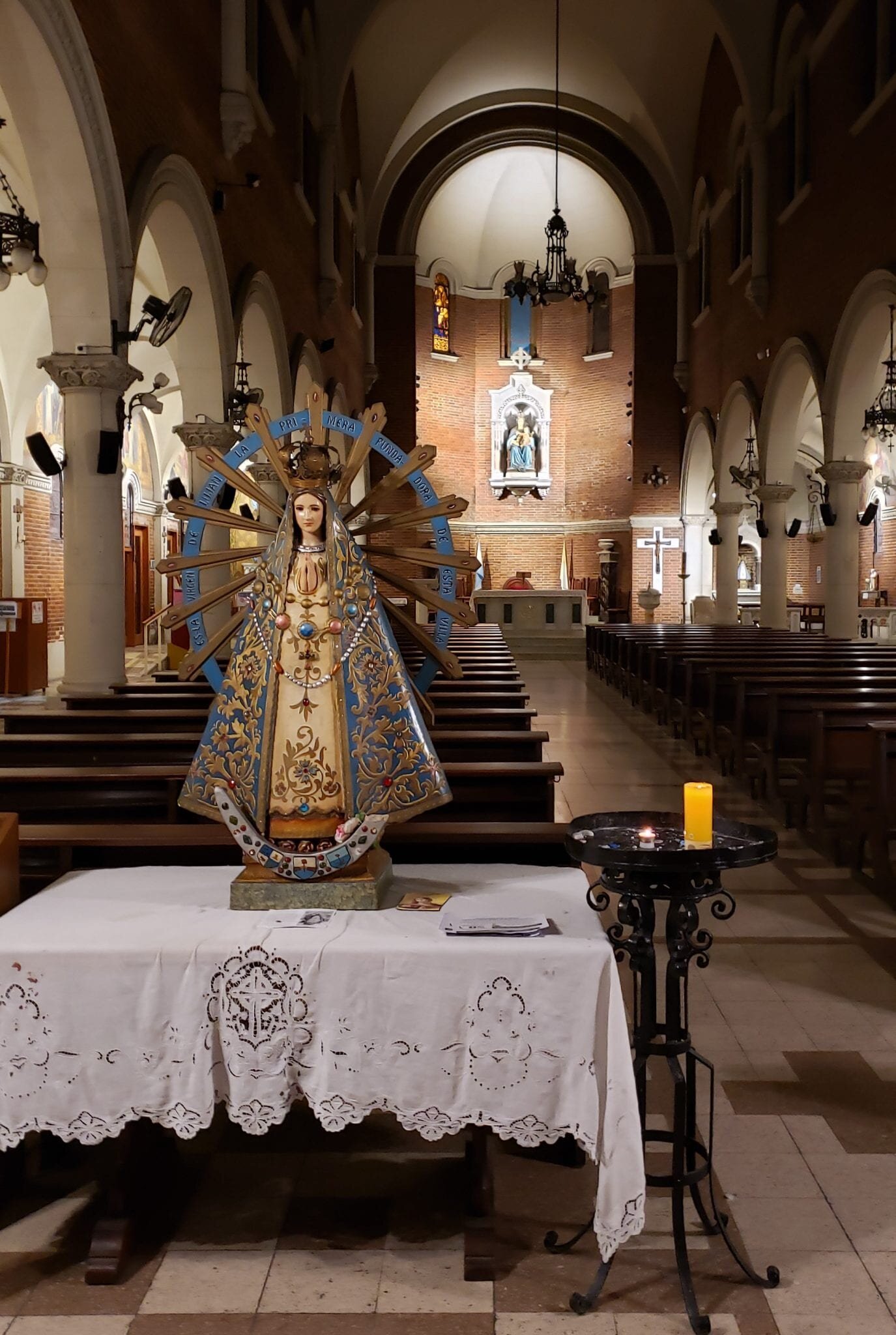Eucharistic Miracles: Buenos Aires, 1996
So far, the Eucharistic miracles that we’ve examined have been from periods of history far removed from our own. The miracles at Lanciano in the 8th century and at Bolsena in the 13th century can sometimes feel so far away and disconnected from us, as if they were just mythical stories that people had passed down. It’s true that other Eucharistic miracles have occurred over the centuries, but even in the last 30 years, there have been a rush of truly stunning Eucharistic phenomena, and perhaps few as jaw-dropping than the miracle in Buenos Aires in 1996.
Fr. Alejandro Pezet, a priest of the Archdiocese of Buenos Aires, had finished distributing Communion and was cleaning up the church after Mass when he discovered a discarded host in the back of the church. Whether the individual who had received it during Mass wasn’t Catholic or had left it in the pews for another reason is uncertain, but Fr. Pezet carefully placed the host in a container full of water to allow it to dissolve. Two days later, as he was preparing to dispose of what was left of the host, he uncovered the container only to find that the host appeared to be covered with red blotches of blood.
Confused by what he found, and seeking guidance from the Church, Fr. Pezet reported the matter to the auxiliary bishop of Buenos Aires, Jorge Bergoglio. If this name sounds familiar, it’s because you know this man - he now goes by the name “Pope Francis!” Bishop Bergoglio, after examining the host, ordered that it be observed and photographed. Taken only a few weeks after the host was first discovered, the photographs showed that the host had grown in size, and now had the appearance of bloody flesh. After three years of observation, the host had not shown signs of decomposing, so Bishop Bergoglio asked that it be scientifically analyzed.
In 1999, Dr. Frederick Zugibe, a cardiologist and forensic pathologist, began performing tests on the miraculous host. What he discovered about the composition of the host is truly stunning:
The analyzed material appeared to be a fragment of heart muscle typically found in the wall of the left ventricle of the heart, close to the valves.
This type of muscle is responsible for the contraction of the heart, and the left ventricle connects nearly all the organ systems by pumping oxygenated blood to the rest of the body.
The blood found on the sample was indeed human, and type AB, which also matches the blood found on the host of Lanciano and from samples extracted from the Shroud of Turin, believed by many to be the burial cloth of Jesus.
The tissue appeared to be in an inflamed state, and contained a large number of white blood cells, indicating that the heart was alive at the time the sample was taken, since these white blood cells die outside of a living organism.
Furthermore, the white blood cells had penetrated the tissue, further indicating that the heart was under severe stress, as if the person themselves had been beaten severely near the chest area.
In an effort to keep the studies as objective as possible, Dr. Zugibe was not informed about the origin of the samples he had analyzed. But after completing the studies, he remarked, “You have to explain one thing to me: If this sample came from a dead person, how could it be that while I was examining it, the cells of the sample were moving and pulsating? If the heart came from someone who died in 1996, how could it still be alive?” When he was informed that the samples had been taken from the miraculous host, he stated, “This will remain an inexplicable mystery to science—a mystery totally beyond her competence.”
As we prepare to celebrate Corpus Christi next weekend, perhaps we can take a moment to remember how mysterious and powerful the doctrine of the Eucharist truly is!


